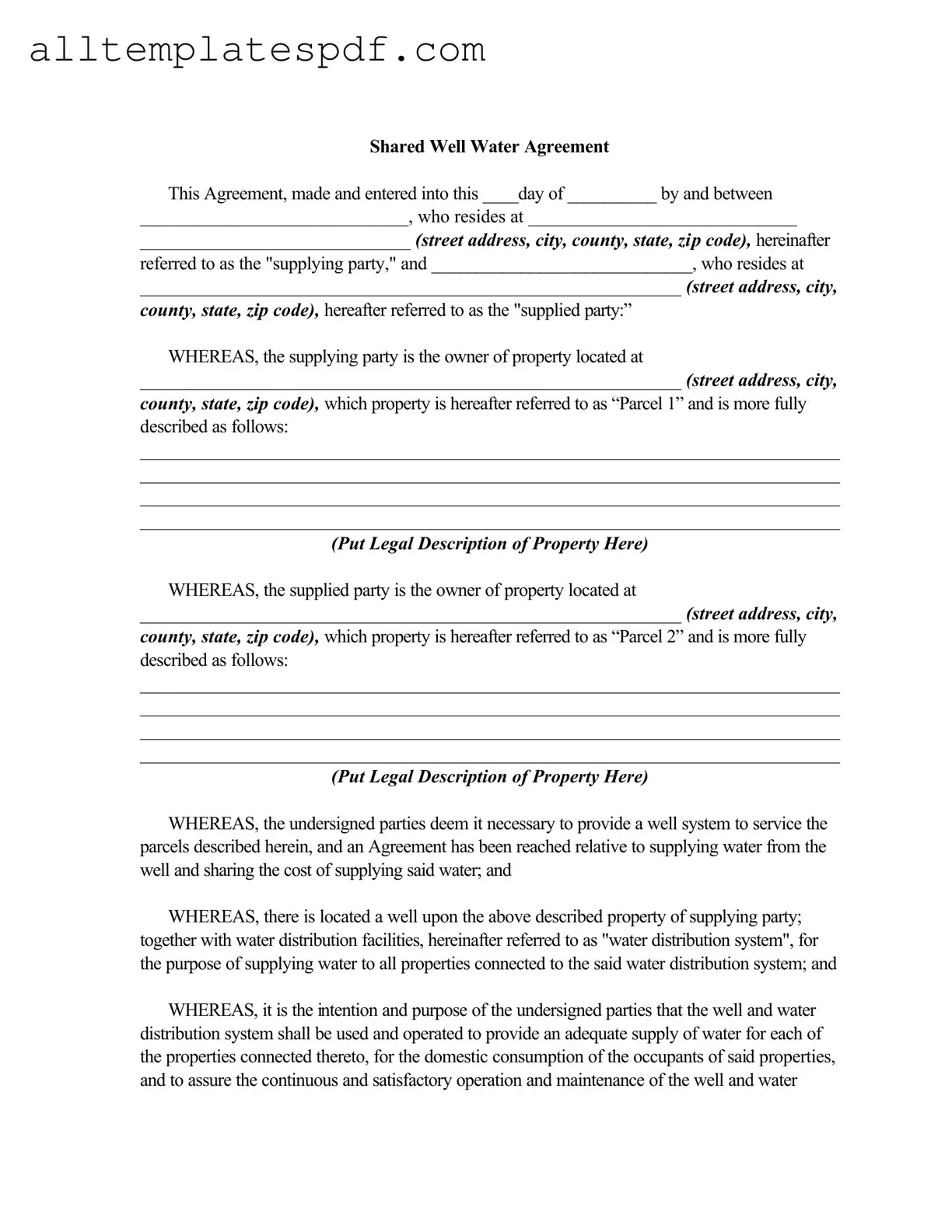Filling out the Shared Well Agreement form is a crucial step for property owners who wish to share a water supply. However, several common mistakes can complicate this process. Understanding these errors can help ensure that the agreement is clear and enforceable.
One frequent mistake is failing to accurately complete the property addresses. Each party must provide their complete street address, including city, county, state, and zip code. Omitting any of this information can lead to confusion and potential disputes in the future. Clarity in property identification is essential for legal enforceability.
Another common error involves neglecting to include the legal description of the properties. This description should provide precise details about the parcels involved. Without it, the agreement may lack the specificity needed to define the boundaries and rights associated with each property.
Additionally, many individuals overlook the importance of specifying the annual fee for using the well and water distribution system. This fee should be clearly stated, along with any exceptions for the first year. Ambiguities in payment terms can lead to misunderstandings and financial disputes later on.
People also often fail to address the sharing of maintenance costs adequately. The agreement stipulates that both parties should contribute equally to expenses. If this section is vague or incomplete, it could lead to disagreements about financial responsibilities when repairs or maintenance are required.
Another mistake involves the easement descriptions. Parties must clearly outline any easements necessary for the construction and maintenance of the well and water distribution system. Failing to do so can create access issues and complicate maintenance efforts.
Moreover, individuals may forget to include a provision for emergency situations. The agreement should state that each party has the right to access the other’s property in case of an emergency affecting the water supply. Without this clause, urgent situations may become problematic.
It is also essential to specify the consequences of non-payment for energy costs. The agreement should outline the timeline for payments and the repercussions for late payments. If this section is not clearly articulated, it may lead to disputes over water supply access.
Finally, parties sometimes neglect to sign the agreement in the presence of a notary public. Notarization can provide an extra layer of legal protection and authenticity to the document. Without it, the agreement may be challenged in court, undermining the intentions of both parties.
By avoiding these common mistakes, property owners can create a Shared Well Agreement that is clear, fair, and enforceable. Attention to detail in this process will help foster a cooperative relationship between the parties involved.
